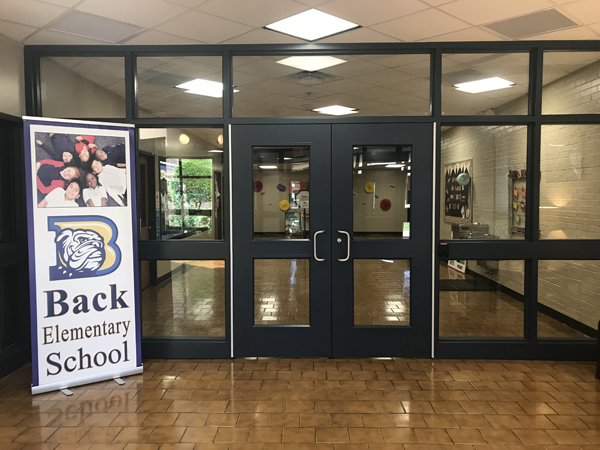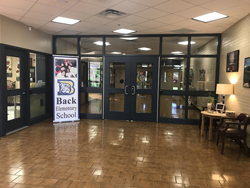In recent months and years, campus safety and security has become an immeasurable concern for students, parents, educators and administrators.
The May 18 shooting at the high school in Santa Fe, Texas, where eight students and two teachers were killed and thirteen others were wounded, brought the tragic situation close to home. Garland ISD’s superintendent, Dr. Ricardo Lopez, was invited to Governor Greg Abbott’s safety and security roundtable that was held a few days after the Santa Fe shootings.
“It was an honor to be part of the governor’s roundtable,” he said. “He [Governor Abbott] invited five school districts and superintendents from GISD, Dallas and Waco.”
The Texas Education Agency’s Commissioner, Mike Morath, a Garland High School graduate, also participated. Lopez said that Morath has worked to highlight safety as a priority, even though it isn’t part of the agency’s accountability system. He added that many of Morath’s safety and security expectations had already been implemented in GISD.
Garland ISD voters approved the 2014 bond knowing that part of the money would be spent on safety and security. It included numerous changes and additions at every campus and, according to Lopez, all the security measures financed by the bond should be completed in about a year. There will be vestibules at every campus, better lighting – both inside and outside, locks on classroom doors and additional cameras. Intrusion systems, the PA system, telecommunications system, fire alarms and sprinklers are being upgraded as well. Panic buttons capable of alerting district dispatch to call 911 will be added to administrative areas. Additionally, random wanding has been instituted.
There are currently 2,967 cameras at campuses and other facilities in the district. That number will increase to 3,500 when the project is finished. A number of existing cameras are 12 or more years old and will  be upgraded to current technology. There will be 25-31 cameras at elementary schools, 70-80 at middle schools and 115-135 at high schools. Exact numbers depend upon the size of the campus.
be upgraded to current technology. There will be 25-31 cameras at elementary schools, 70-80 at middle schools and 115-135 at high schools. Exact numbers depend upon the size of the campus.
The upgrade of the telecommunications system will provide remote PA access from the district’s 24-hour dispatch for emergency paging to each campus and speakers will be added to the exterior of all campuses.
Other measures, such as campus administration being alerted when outside doors are open, will help keep campuses secure. Also, many of the schools have portable classrooms, and the safety features for those include intrusion alarms, smoke detectors, CCTV and security patrol.
Lopez pointed out that weather emergencies are also a safety concern and the exterior speakers will enable notification to students that are outdoors when inclement weather is on the way. Weather sirens will also be added at every campus.
Not part of the bond, but the most valuable safety and security asset is School Resource Officers. There are two at each high school, one at each middle school and roving SROs at elementary schools.
Anonymous hotlines are available for reporting activity that concerns students and they are encouraged to take advantage of it. Most of the tips come from students, but some are from parents and police. Every tip is investigated.
“We need for the kids to help us out,” Lopez said. “Communication is a great way to keep campuses safe.”
He added that security must be accomplished by partnerships with police departments, the community and the parents.

“We need to go back to those ‘snooping days’,” the superintendent said. “If you see something, report it. If there’s something going on that you don’t want in your neighborhood, call the police.”
Additionally, the district needs for parents to monitor their children.
“We need parents to be more diligent,” Lopez said. “That is the key and it costs $0.”
He asks that parents check their children’s cell phones and social media accounts. In addition, it is important to know what they are taking to school in their backpacks. For example, a young student might be taking a toy gun to school.
“The days where that was OK are gone,” Lopez said. “We have good families with good kids that aren’t making very good decisions because the kids aren’t being monitored. We need the parents to do that.”
In addition to going through their backpacks and phones, he encourages parents to know what the kids have in their rooms, their bureau drawers, their pockets.
Get back to the “snooping days.”
Back ES photos provided by Garland ISD.


